Henry N. Chapman
Observation of Aerosolization-induced Morphological Changes in Viral Capsids
Jul 16, 2024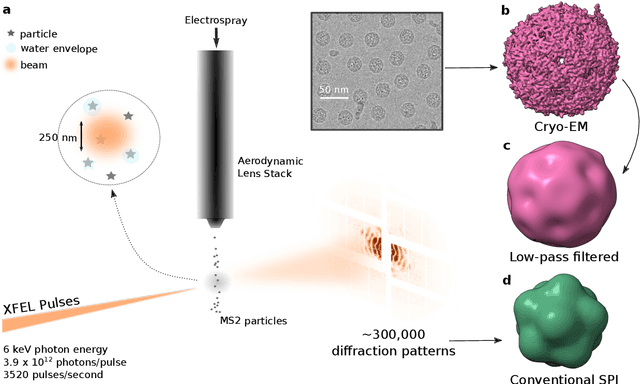
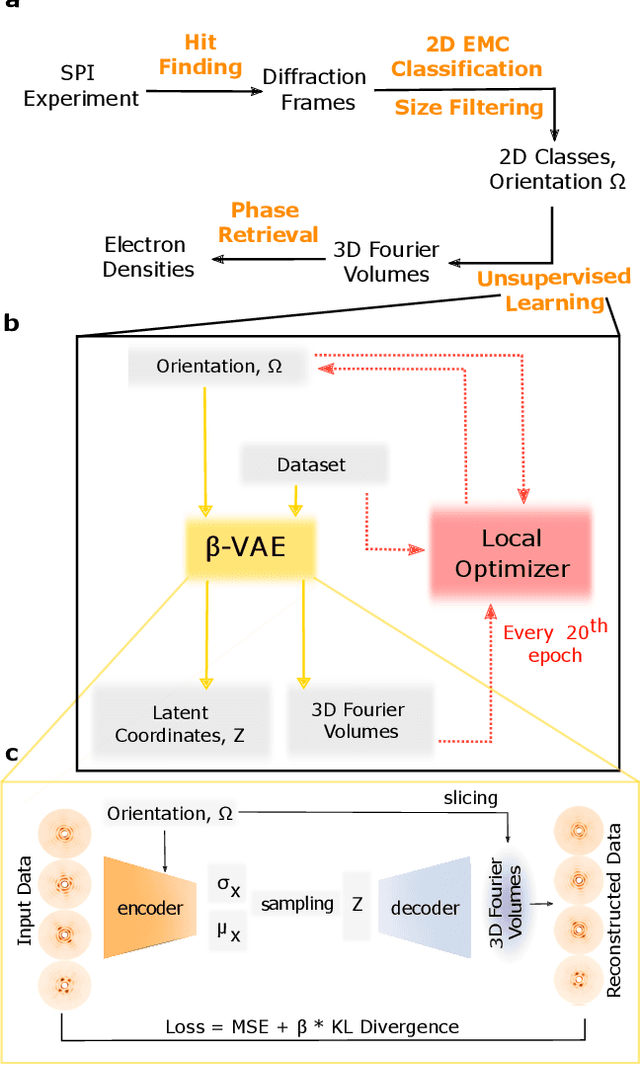
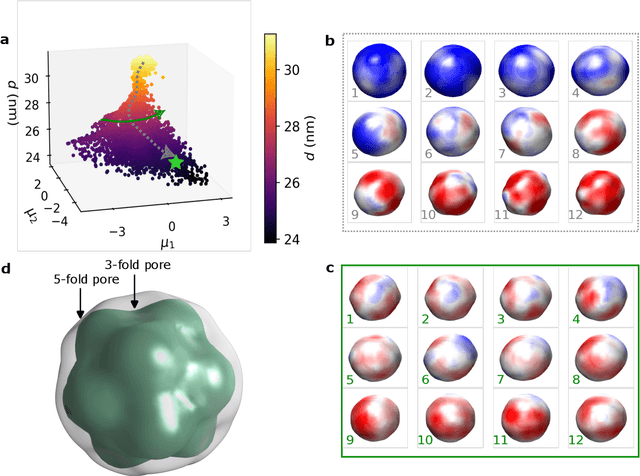
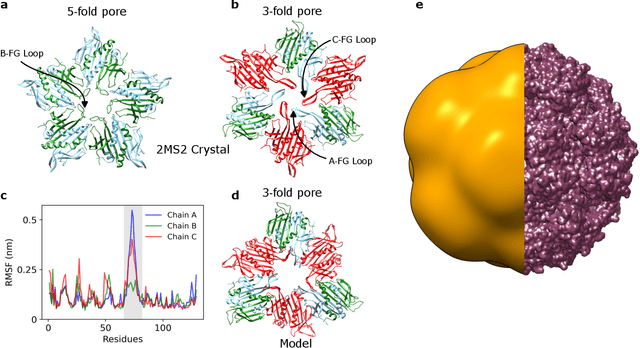
Abstract:Single-stranded RNA viruses co-assemble their capsid with the genome and variations in capsid structures can have significant functional relevance. In particular, viruses need to respond to a dehydrating environment to prevent genomic degradation and remain active upon rehydration. Theoretical work has predicted low-energy buckling transitions in icosahedral capsids which could protect the virus from further dehydration. However, there has been no direct experimental evidence, nor molecular mechanism, for such behaviour. Here we observe this transition using X-ray single particle imaging of MS2 bacteriophages after aerosolization. Using a combination of machine learning tools, we classify hundreds of thousands of single particle diffraction patterns to learn the structural landscape of the capsid morphology as a function of time spent in the aerosol phase. We found a previously unreported compact conformation as well as intermediate structures which suggest an incoherent buckling transition which does not preserve icosahedral symmetry. Finally, we propose a mechanism of this buckling, where a single 19-residue loop is destabilised, leading to the large observed morphology change. Our results provide experimental evidence for a mechanism by which viral capsids protect themselves from dehydration. In the process, these findings also demonstrate the power of single particle X-ray imaging and machine learning methods in studying biomolecular structural dynamics.
Live Iterative Ptychography with projection-based algorithms
Sep 19, 2023Abstract:In this work, we demonstrate that the ptychographic phase problem can be solved in a live fashion during scanning, while data is still being collected. We propose a generally applicable modification of the widespread projection-based algorithms such as Error Reduction (ER) and Difference Map (DM). This novel variant of ptychographic phase retrieval enables immediate visual feedback during experiments, reconstruction of arbitrary-sized objects with a fixed amount of computational resources, and adaptive scanning. By building upon the Real-Time Iterative Spectrogram Inversion (RTISI) family of algorithms from the audio processing literature, we show that live variants of projection-based methods such as DM can be derived naturally and may even achieve higher-quality reconstructions than their classic non-live counterparts with comparable effective computational load.
Megahertz X-ray Multi-projection imaging
May 19, 2023

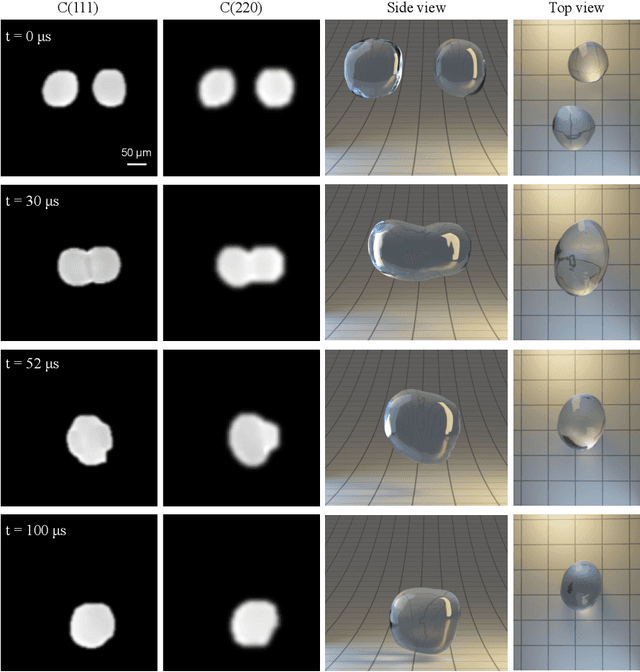
Abstract:X-ray time-resolved tomography is one of the most popular X-ray techniques to probe dynamics in three dimensions (3D). Recent developments in time-resolved tomography opened the possibility of recording kilohertz-rate 3D movies. However, tomography requires rotating the sample with respect to the X-ray beam, which prevents characterization of faster structural dynamics. Here, we present megahertz (MHz) X-ray multi-projection imaging (MHz-XMPI), a technique capable of recording volumetric information at MHz rates and micrometer resolution without scanning the sample. We achieved this by harnessing the unique megahertz pulse structure and intensity of the European X-ray Free-electron Laser with a combination of novel detection and reconstruction approaches that do not require sample rotations. Our approach enables generating multiple X-ray probes that simultaneously record several angular projections for each pulse in the megahertz pulse burst. We provide a proof-of-concept demonstration of the MHz-XMPI technique's capability to probe 4D (3D+time) information on stochastic phenomena and non-reproducible processes three orders of magnitude faster than state-of-the-art time-resolved X-ray tomography, by generating 3D movies of binary droplet collisions. We anticipate that MHz-XMPI will enable in-situ and operando studies that were impossible before, either due to the lack of temporal resolution or because the systems were opaque (such as for MHz imaging based on optical microscopy).
DriftRec: Adapting diffusion models to blind image restoration tasks
Nov 12, 2022



Abstract:In this work, we utilize the high-fidelity generation abilities of diffusion models to solve blind image restoration tasks, using JPEG artifact removal at high compression levels as an example. We propose an elegant modification of the forward stochastic differential equation of diffusion models to adapt them to restoration tasks and name our method DriftRec. Comparing DriftRec against an $L_2$ regression baseline with the same network architecture and a state-of-the-art technique for JPEG reconstruction, we show that our approach can escape both baselines' tendency to generate blurry images, and recovers the distribution of clean images significantly more faithfully while only requiring a dataset of clean/corrupted image pairs and no knowledge about the corruption operation. By utilizing the idea that the distributions of clean and corrupted images are much closer to each other than to a Gaussian prior, our approach requires only low levels of added noise, and thus needs comparatively few sampling steps even without further optimizations.
Deep Iterative Phase Retrieval for Ptychography
Feb 17, 2022



Abstract:One of the most prominent challenges in the field of diffractive imaging is the phase retrieval (PR) problem: In order to reconstruct an object from its diffraction pattern, the inverse Fourier transform must be computed. This is only possible given the full complex-valued diffraction data, i.e. magnitude and phase. However, in diffractive imaging, generally only magnitudes can be directly measured while the phase needs to be estimated. In this work we specifically consider ptychography, a sub-field of diffractive imaging, where objects are reconstructed from multiple overlapping diffraction images. We propose an augmentation of existing iterative phase retrieval algorithms with a neural network designed for refining the result of each iteration. For this purpose we adapt and extend a recently proposed architecture from the speech processing field. Evaluation results show the proposed approach delivers improved convergence rates in terms of both iteration count and algorithm runtime.
Unsupervised learning approaches to characterize heterogeneous samples using X-ray single particle imaging
Sep 13, 2021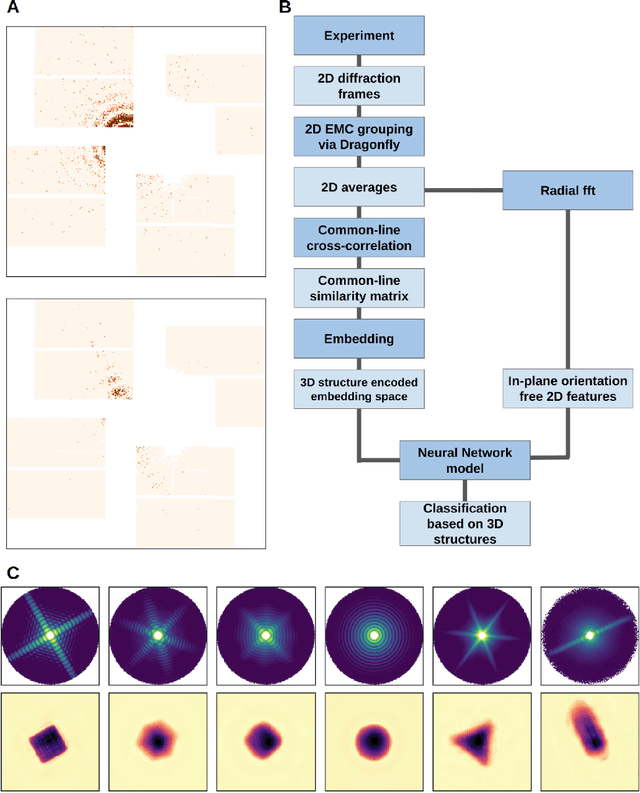
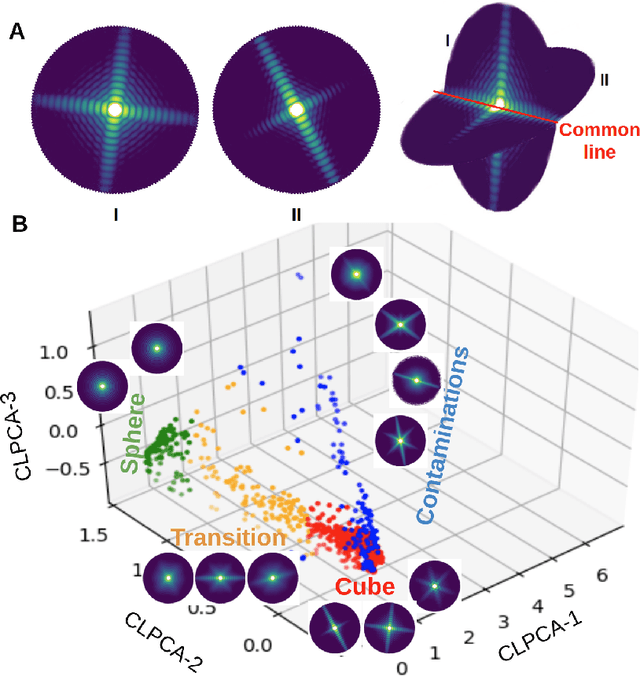
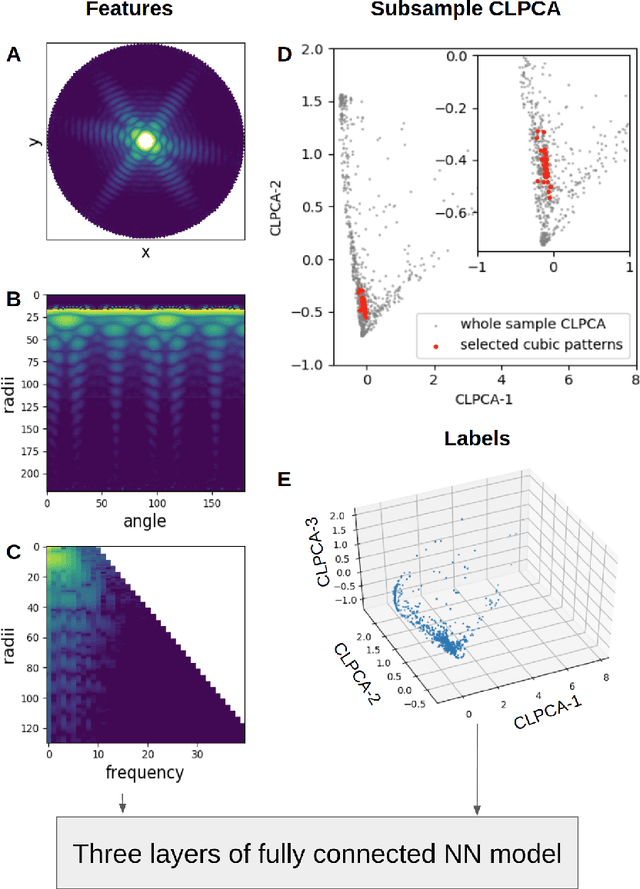
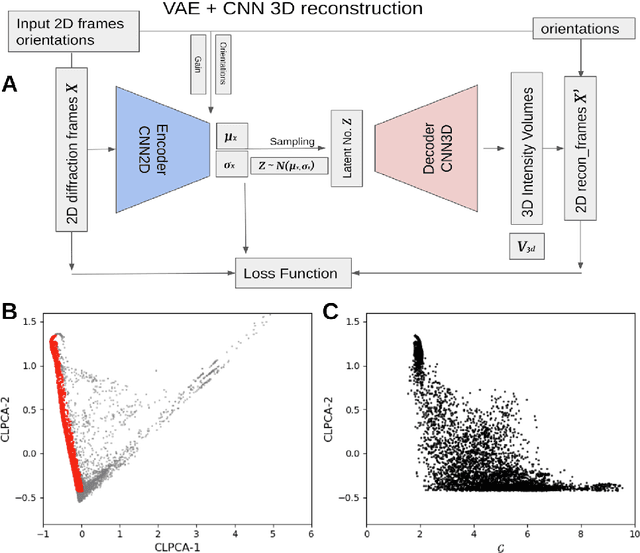
Abstract:One of the outstanding analytical problems in X-ray single particle imaging (SPI) is the classification of structural heterogeneity, which is especially difficult given the low signal-to-noise ratios of individual patterns and that even identical objects can yield patterns that vary greatly when orientation is taken into consideration. We propose two methods which explicitly account for this orientation-induced variation and can robustly determine the structural landscape of a sample ensemble. The first, termed common-line principal component analysis (PCA) provides a rough classification which is essentially parameter-free and can be run automatically on any SPI dataset. The second method, utilizing variation auto-encoders (VAEs) can generate 3D structures of the objects at any point in the structural landscape. We implement both these methods in combination with the noise-tolerant expand-maximize-compress (EMC) algorithm and demonstrate its utility by applying it to an experimental dataset from gold nanoparticles with only a few thousand photons per pattern and recover both discrete structural classes as well as continuous deformations. These developments diverge from previous approaches of extracting reproducible subsets of patterns from a dataset and open up the possibility to move beyond studying homogeneous sample sets and study open questions on topics such as nanocrystal growth and dynamics as well as phase transitions which have not been externally triggered.
 Add to Chrome
Add to Chrome Add to Firefox
Add to Firefox Add to Edge
Add to Edge